Fantastic Mr Fox and the Salt Pandemonium
The estuary here at Montrose Basin is ever changing. Since beginning my time volunteering here I have watched with intrigue as the Basin transforms over the course of the day, as the high tide brings birds in close to the visitor centre for excellent viewing and the low reveals mudflats which attract a multitude of waders, wildfowl and seals. I have never experienced a change quite as extreme as the one we witnessed on Friday, as an extra high tide came in, backed by strong winds and the salt pans were flooded.
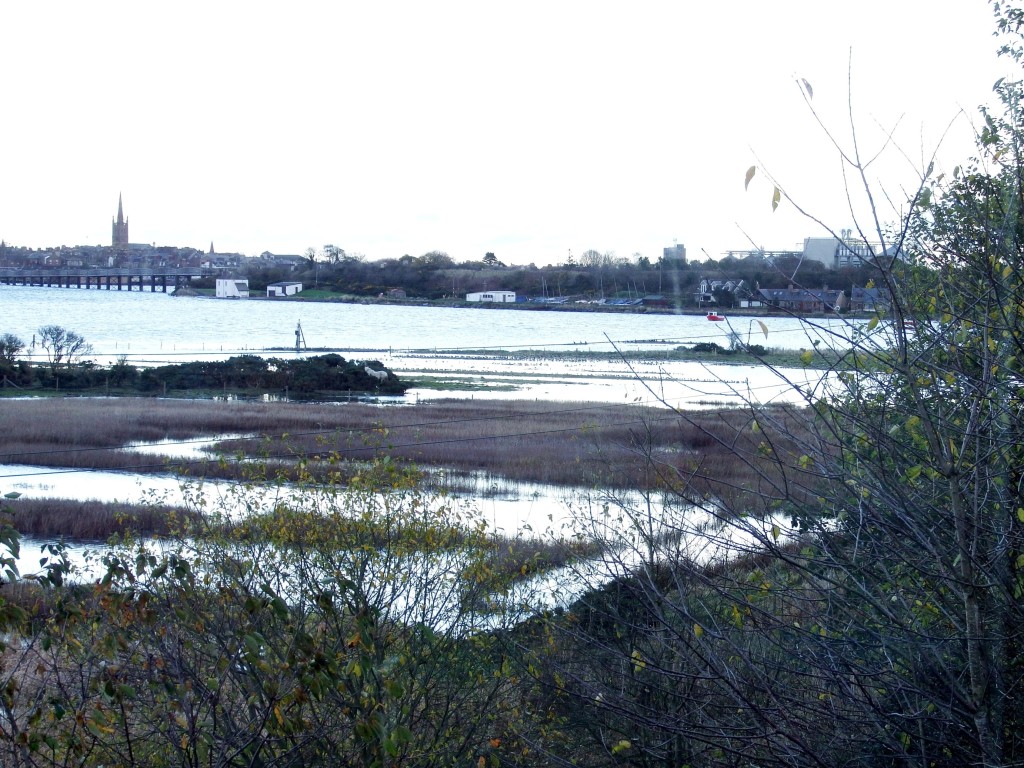
Usually shallow pools normally adorned with dipping ducks and hungry herons were engulfed into the mass of the estuary. This was a spectacle in itself; however not the only one as the flooding also created an island, on which a lonely fox became trapped! We watched intently from the visitor centre window as the beautiful creature searched his small island for an escape route.
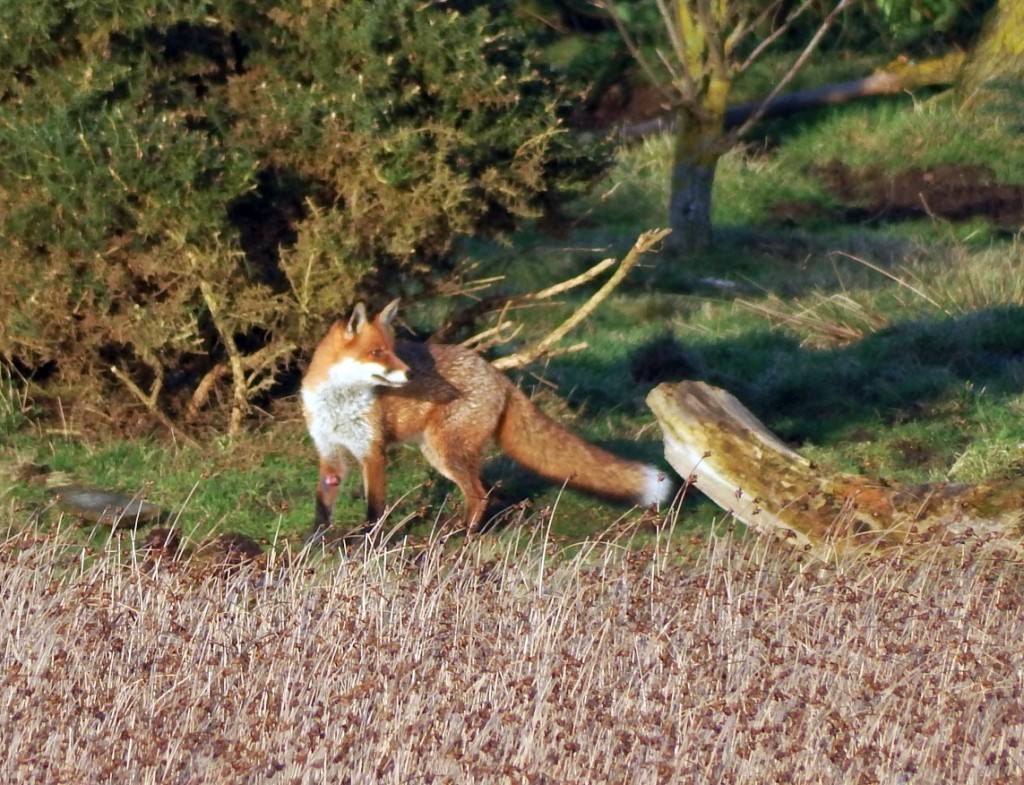
Neither the ponies nor the birds who had taken refuge on this dry patch of land seemed perturbed by his presence, and neither he theirs. He seemed a lot more preoccupied with getting back home than finding himself a snack!
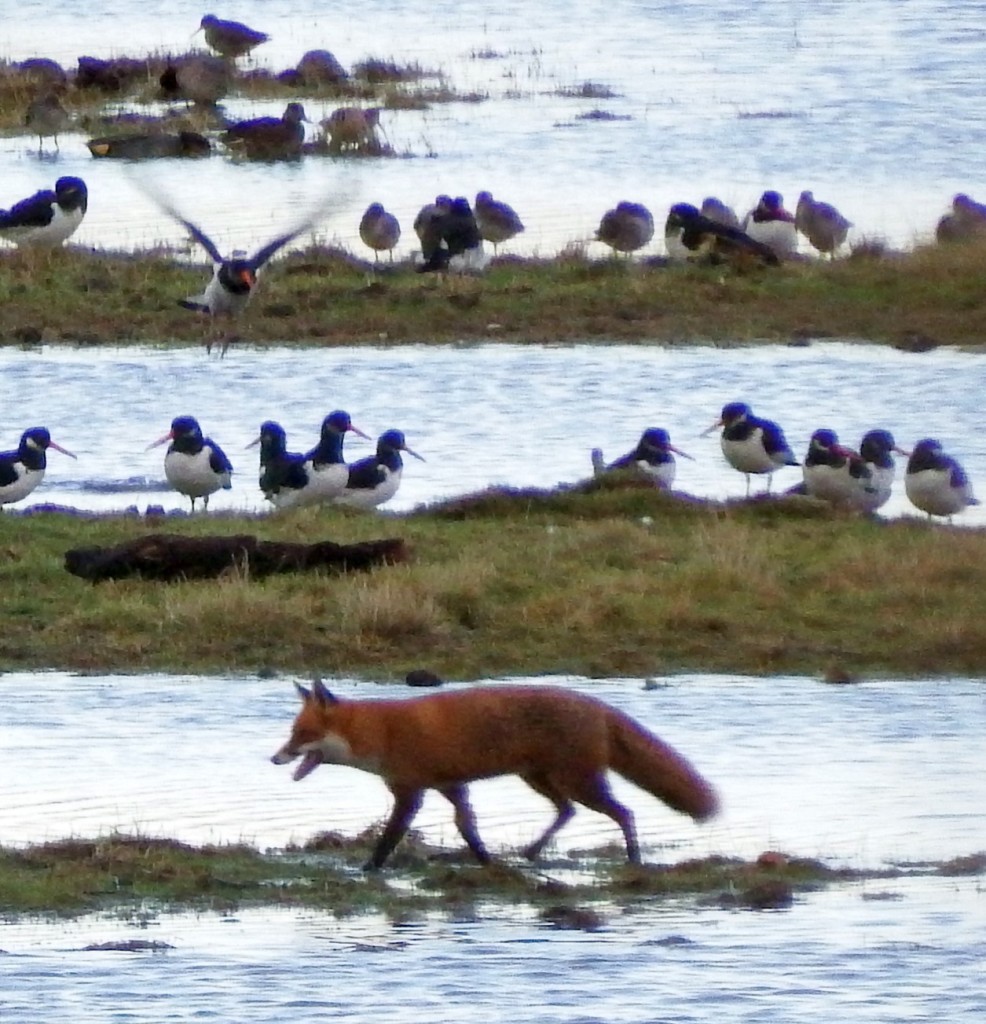
Reluctant to step in to the water, our furry friend wandered back and forth for some time before eventually giving in and wading to the mainland where he joyfully dashed in to the bushes and out of sight.
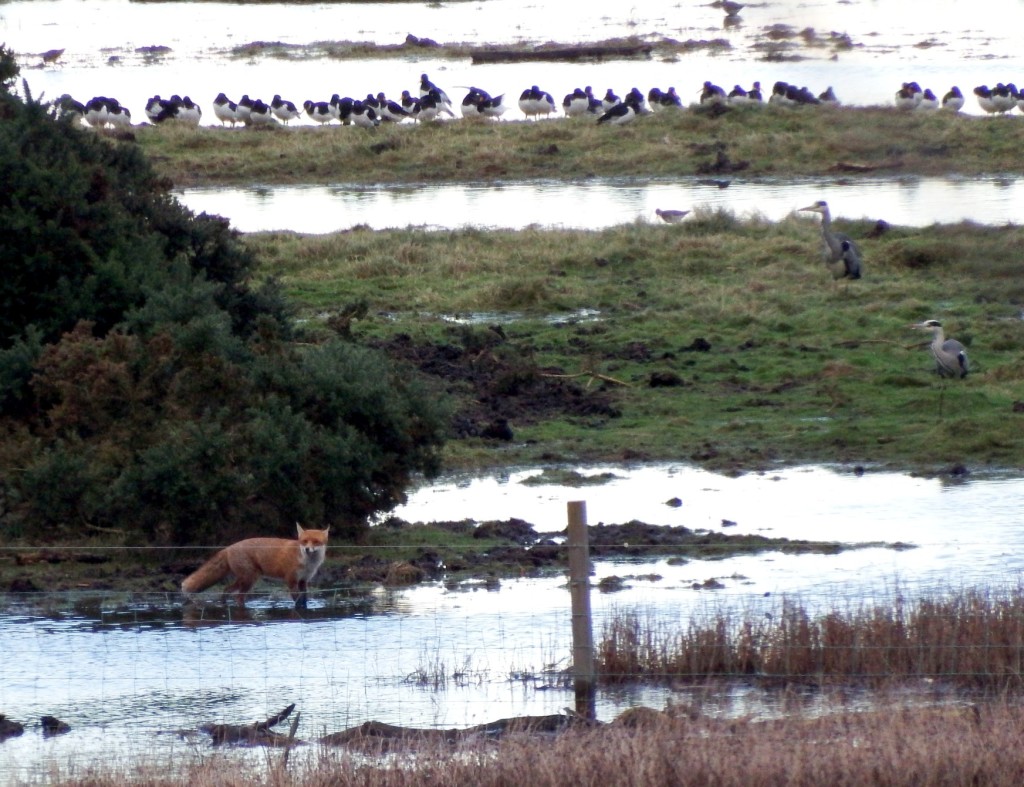
This unusual daytime visitor and the interest of the flooding saltpans led me to look into their history. Beginning in the 12th century, the saltpans surrounding the Basin were vital as a part of the booming salmon export trade from Montrose. Water from the estuary was captured here during high tides and as the water evaporated and a concentrated solution of brine was created. This was then boiled to remove the rest of the water, and the resulting salt was used to preserve fish before export. When the visitor centre opened here in 1995, these salt pans were scraped out to provide shallow pools for wildlife.
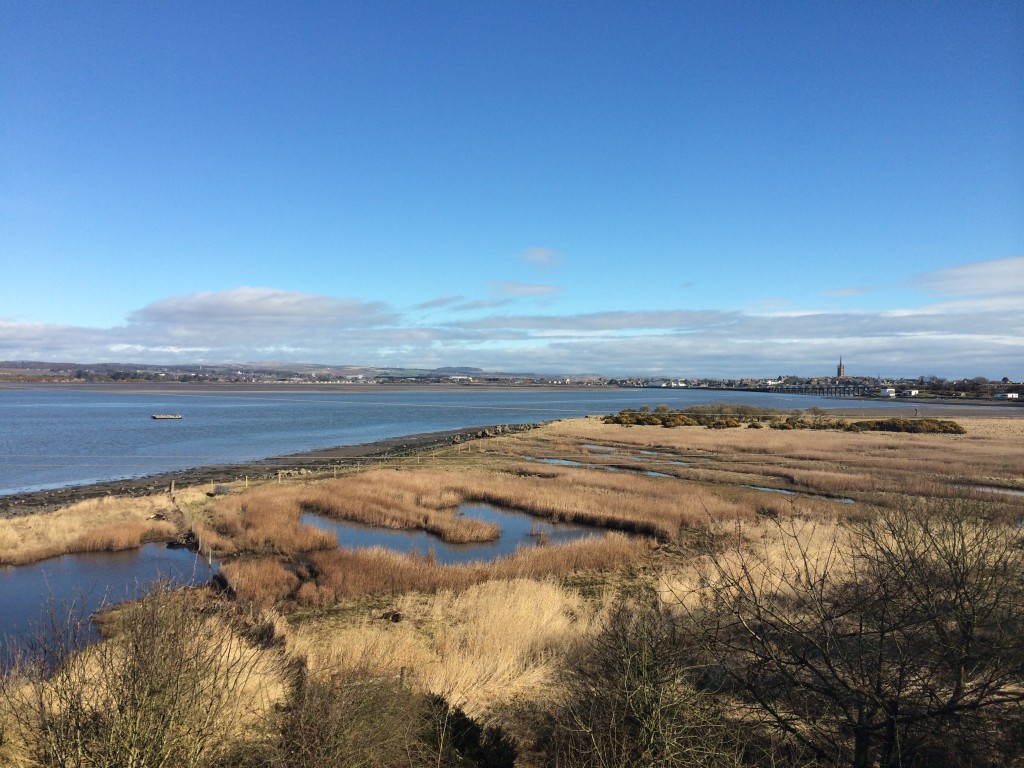
However, these pools became increasingly invaded by the surrounding vegetation and by 2007 had almost dried up. A new strategy was needed. The pools were once again scraped out and this time the area was fenced off so that a flock of Scottish Wildlife Trust’s hardy Hebridean sheep could be routinely placed in the area to graze the vegetation and keep it under control. Cattle have also been used to graze this area, but recently we have used Highland ponies, which can often be seen happily meandering around the salt pans and nearby field.
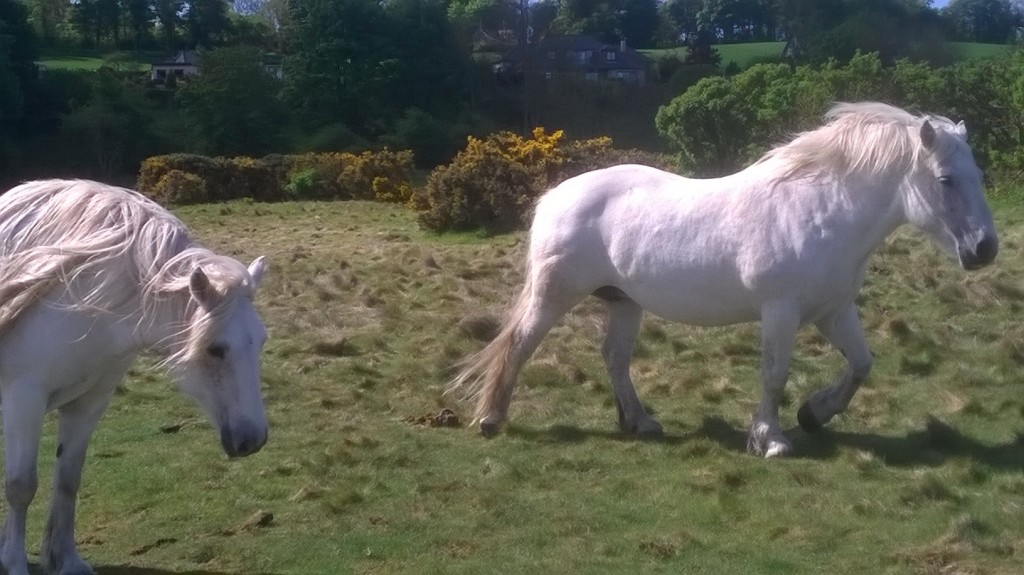
I have been blessed to see many species of bird enjoying these salt pan pools including teal, moorhen, water rail, snipe, grey herons, the occasional little egret and our wonderful resident kingfisher (have a look at our previous blog for some information about him!).
Aileen Corral- Visitor Centre Intern
Help protect Scotland’s wildlife
Our work to save Scotland’s wildlife is made possible thanks to the generosity of our members and supporters.
Join today from just £3 a month to help protect the species you love.
Preface
The estuary here at Montrose Basin is ever changing. Since beginning my time volunteering here I have watched with intrigue as the Basin transforms over the course of the day, …
